Pull Up a Chair: It's Spring!
With the dirty downside of today's outdoor furniture
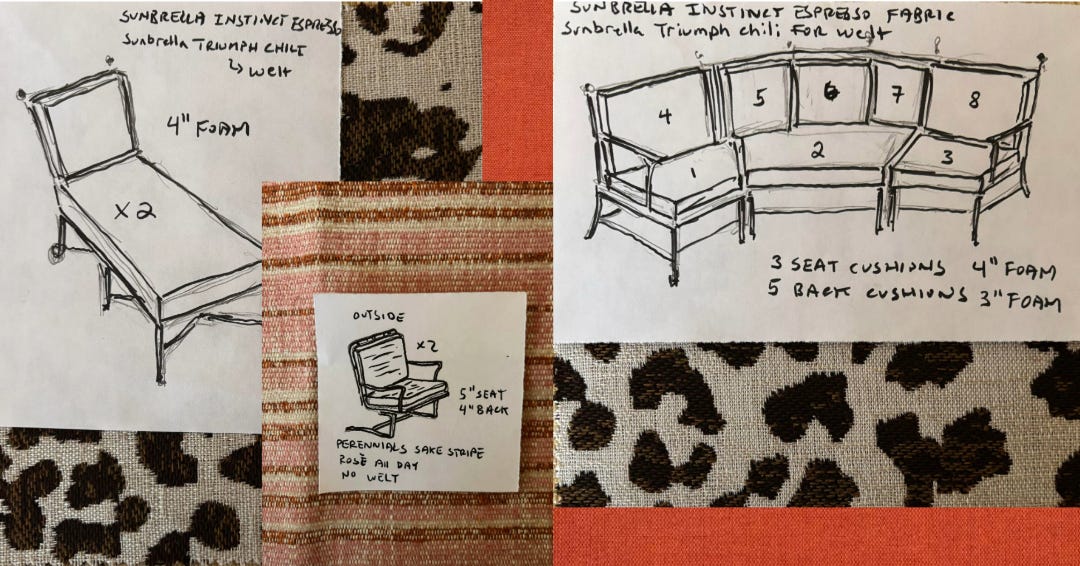
Spring has sprung! Time to … buy outdoor seating! Yes, I can almost guarantee you need more outdoor seating, just as you probably can use more shrubs. I spent sleepless nights debating with myself whether to write about seating or planting to welcome spring — and I chose seating. It’s that important.
Adding seating is the easiest way to create a destination — to draw you and your family and friends out into your yard and keep you there — and that will improve your lives. (Not convinced? See For the Joy of It: 12 benefits of gardening from recent research.) And spring, when others are cleaning out their garages, is the time to buy sustainable used outdoor furniture. Read on for my tips for buying outdoor furniture, including the dirty downside, plus the 10 Weekends to Wild: Challenge #2.
Three types of spring
As for spring, leaves have started to appear as far north as Washington and first blooms as far north as Charleston. These are signs of phenological spring, which changes with location and weather, unlike meteorological spring (March 1) or astrological spring, the vernal equinox (March 20 or 21). Phenological spring will continue its march northward, arriving in the Twin Cities around the middle of April – 12 weeks after it arrived in San Diego, Houston, and Jacksonville.

You can check spring’s arrival at your location at the USA National Phenology Network, which predicts and tracks the first leaf and first bloom based on observations by citizen scientists of — I’m sorry to report — exotic, clonal cultivars of lilac and honeysuckle. Scientists are working to develop similar indices of first leaf and first bloom for native woody plants, according to an article in the latest issue of Agricultural and Forest Meteorology.
If spring hasn’t arrived in your yard, you can make your own spring inside by forcing branches of Northern spicebush, redbud, red maple, pussy willow, and other early blooming shrubs and trees. Don’t have early spring flowering shrubs and trees in your yard? Think about where you can add them to brighten your yard and provide early nourishment for native bees.
— Heather
P.S. Woohoo! Design Your Wild is now officially a Substack bestseller! Thank you to all our readers and special thanks to paying subscribers, who keep this newsletter free for others.
Dear Heather: Can you describe how to use regulating lines to achieve proper scale and alignment? — Stef, Georgia
Design is intention. Regulating lines help you place elements intentionally in the landscape by showing how they relate spatially to the house, in terms of both scale and alignment. They are simply imaginary lines extending the exterior walls and features of the house. The house itself divides the yard into rooms, so regulating lines are also a reminder of these divisions.
In the diagram below, for example, the regulating lines emanating from the back door establish scale (roughly three to four feet); in this case they also remind us of the visual weight of the door on the right, which is balanced by siting the green play area on the left. The regulating line from the left side of the house bisects the play area, which unites the back side yard with the area behind the house. There’s no ideal placement or size, but the lines make it easier to perceive the balance of the overall composition. If you add additional elements, the balance of will change.
10 Weekends to Wild Challenge #2: Score some seating
Last newsletter I introduced the first “10 Weekends to Wild” challenge. The challenges are fast, fun activities to make your yard more enjoyable (as well as more biodiverse). I’m hopeful we’ll develop an active community exchanging design challenges and inspiration for human-centered, biodiverse yards. It’s open to all subscribers and I hope many of you will participate this week!
This weekend’s challenge is to get some more outdoor seating. Spring is the prime time to find quality used pieces at good prices (or free!) on Facebook Marketplace or at local consignment stores. And you almost certainly don’t have enough seating; even a small urban backyard can fit three seating areas. Then post pictures of your finds to my Substack chat to inspire our community by hitting “reply” to the Challenge #2 thread. The fun part about the chat functionality is sharing images, which comments don’t allow.
Guide to buying outdoor furniture
First, here’s the dirty downside: Most of those great looking outdoor living areas you see in magazines and catalogs are highly impractical unless covered — especially the cushions, but sometimes the frames, too. At best, the cushions can take days to dry; at worst, the cushions and frames deteriorate quickly in sun and rain. Having tried various solutions, I’ve found we use our outdoor furniture much more often when we don’t have to uncover them or haul cushions out of storage. And remember how garden visitors get a feeling of “comfort” from just seeing a place to sit? They don’t get that from seeing a bulky cover.
So read labels thoroughly and keep furniture that can’t stand the heat (or rain) out of the landscape on a covered porch. Here are some solutions for truly outdoor furniture:
Wood outdoor seating
Wood outdoor furniture can be beautiful and practical. Unfinished red or white cedar, for example, will age to a lovely grey. Choose chairs with seats made of wood or a synthetic mesh material that dries quickly, so you can use them soon after a rain. You’ll find examples on our outdoor furniture Pinterest board. (One caveat: Although I have lightly vetted the items on the board, I have not thoroughly researched them. Please do your own research.)
While I love a great Adirondack chair, none of the wood ones I’ve tested are really comfortable. (If you’ve found a comfortable wood Adirondack chair, please tell us in comments or chat where we can find it!) I’ve heard good things about these plans from This Old House. For our house in Florida, Pete is going to build the minimalist Wave Hill-inspired garden chairs from plans by Dan Benarcik in inexpensive pine, which I’ll paint using mini rollers and Rustoleum Caterpillar yellow to match our other outdoor furniture. They’ll add a sense of comfort and a visual “wow” against our wild plantings.
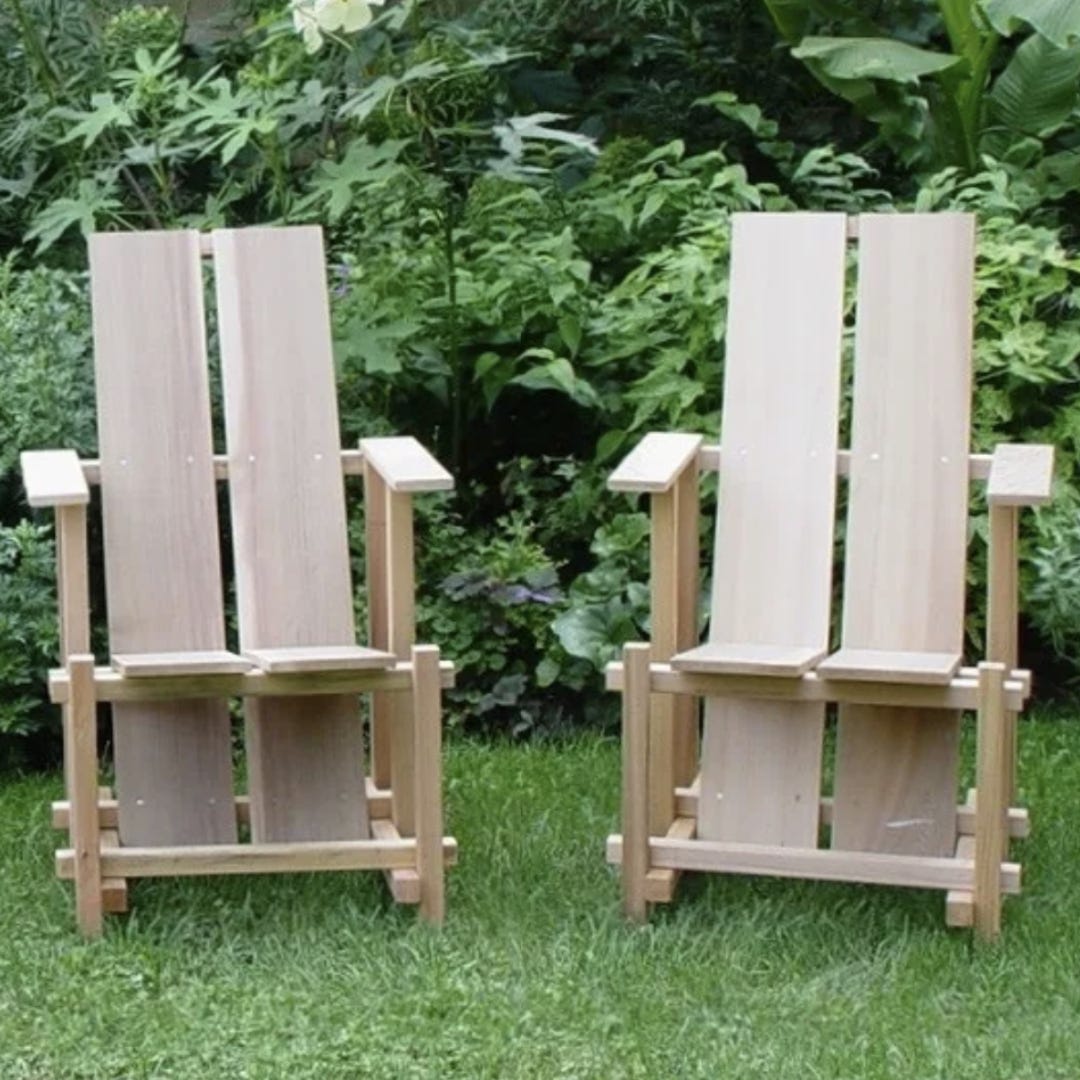
Metal outdoor furniture
My top recommendation is to buy used outdoor furniture, because buying used is sooooo much more sustainable than buying new. Quality steel, aluminum, or wrought iron furniture lasts a long time and can be painted to create a consistent look. I have bought beautiful, well-made outdoor seating at local used furniture and consignment stores and through Chairish and Facebook Marketplace.
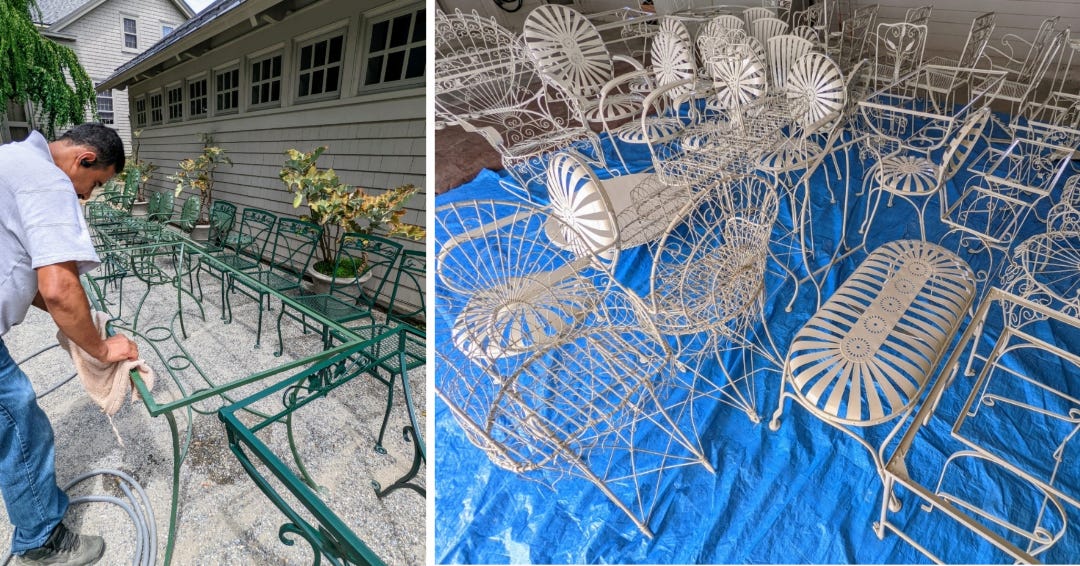
The very best metal seating options don’t require cushions. Last summer, I went crazy buying used Brown Jordan chairs with vinyl straps and aluminum frames for Lila, Zoe, and myself. Avoid buying chairs with broken straps, because professional strap replacement is costly. Also, buy many pieces together if possible; it’s difficult to cobble together a set because there are so many frame and strap color options.
If you’re considering buying used outdoor furniture that needs new cushions, I recommend finding a source for the exact size at a reasonable price before you buy. You can find cushions on Amazon or Etsy and order them to custom sizes from Etsy makers. This year, I’m going all out and having cushions made for all my Rhode Island furniture in really fabulous marine quality outdoor fabric with quick-dry foam.
Summary outdoor furniture buying tips
Do
Buy used locally (Facebook Marketplace, Craigslist, used furniture stores, garage sales)
Buy aluminum, wrought iron, and unfinished wood (made for outdoor use)
Look for quality brands and designers like Brown Jordan, Design Within Reach, Janus et cie, Meadowcraft, Russell Woodard, Salterini, Tropitone
Find quick-dry cushions in marine quality outdoor fabric
Consider a single unifying color
Don’t
Wait to buy (“Comfort” is important!)
Cover or put away cushions
Buy seating without pricing needed cushions
Spend too much!
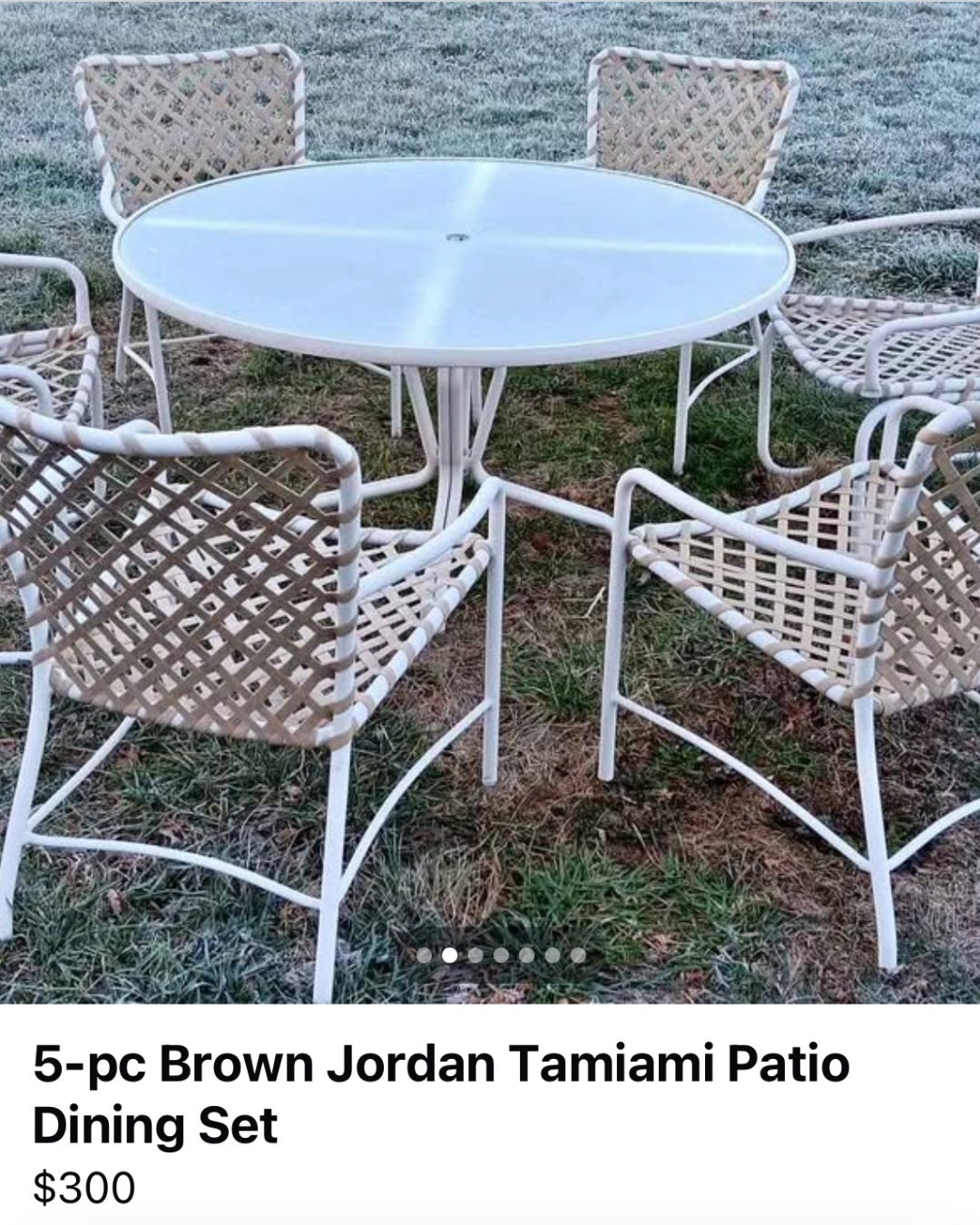
Gorgeous native gardens: Seating as focal point
Liza Kiesler of Viburnum Gardens and her client made a fabulous firepit the focal point of this gorgeous Vermont landscape. I had the pleasure of interviewing them both for an article about the landscape design process that appeared in the current issue of The American Gardener.




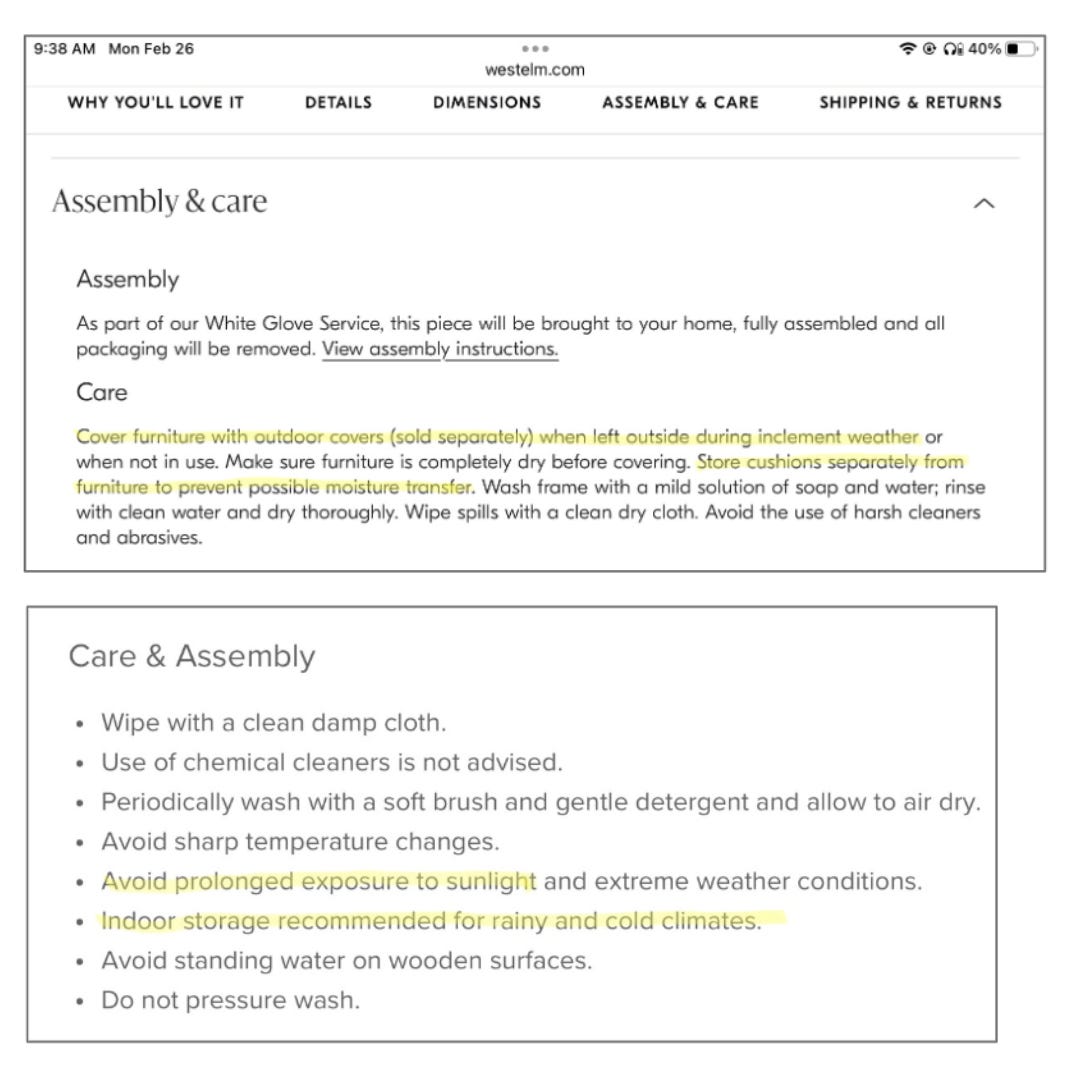
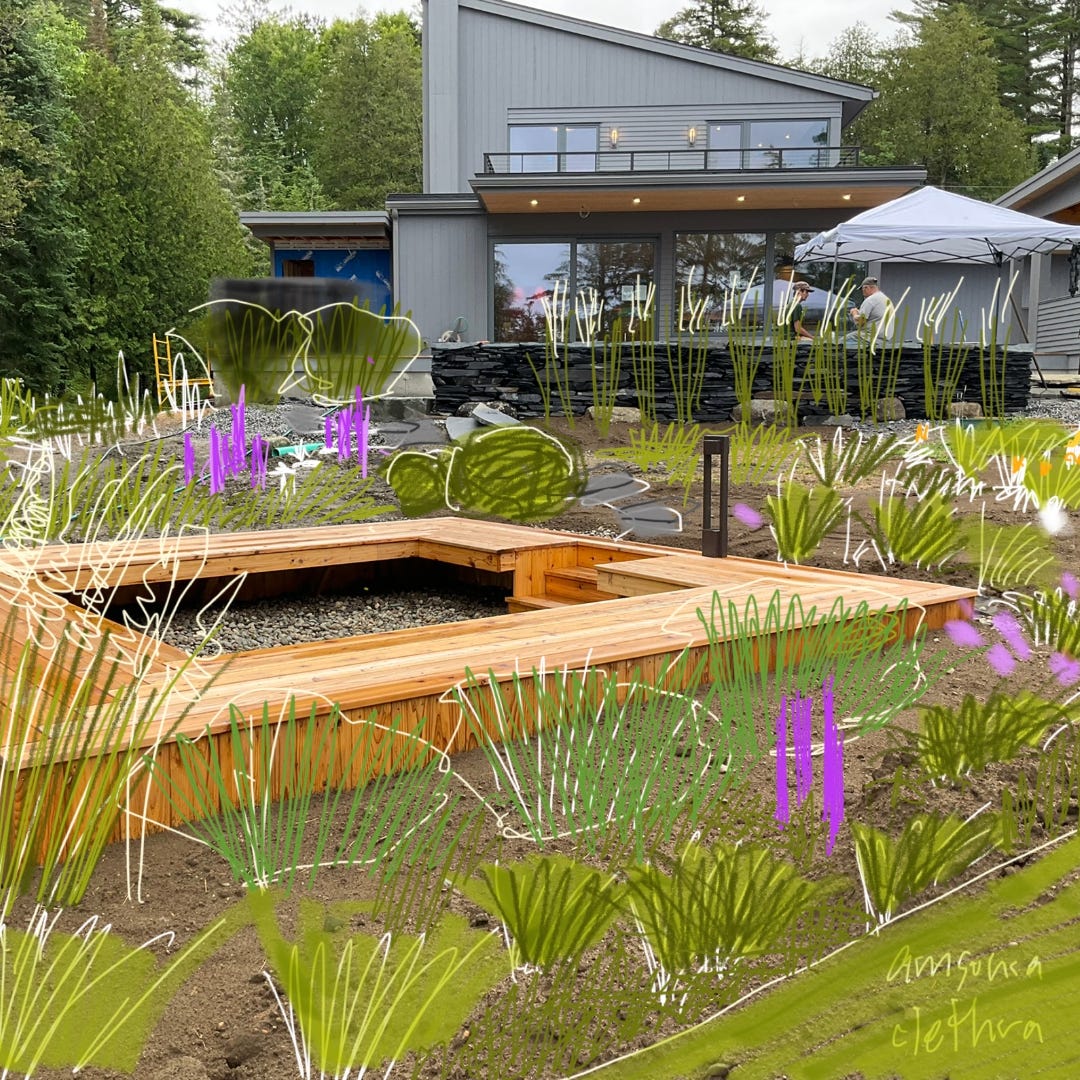
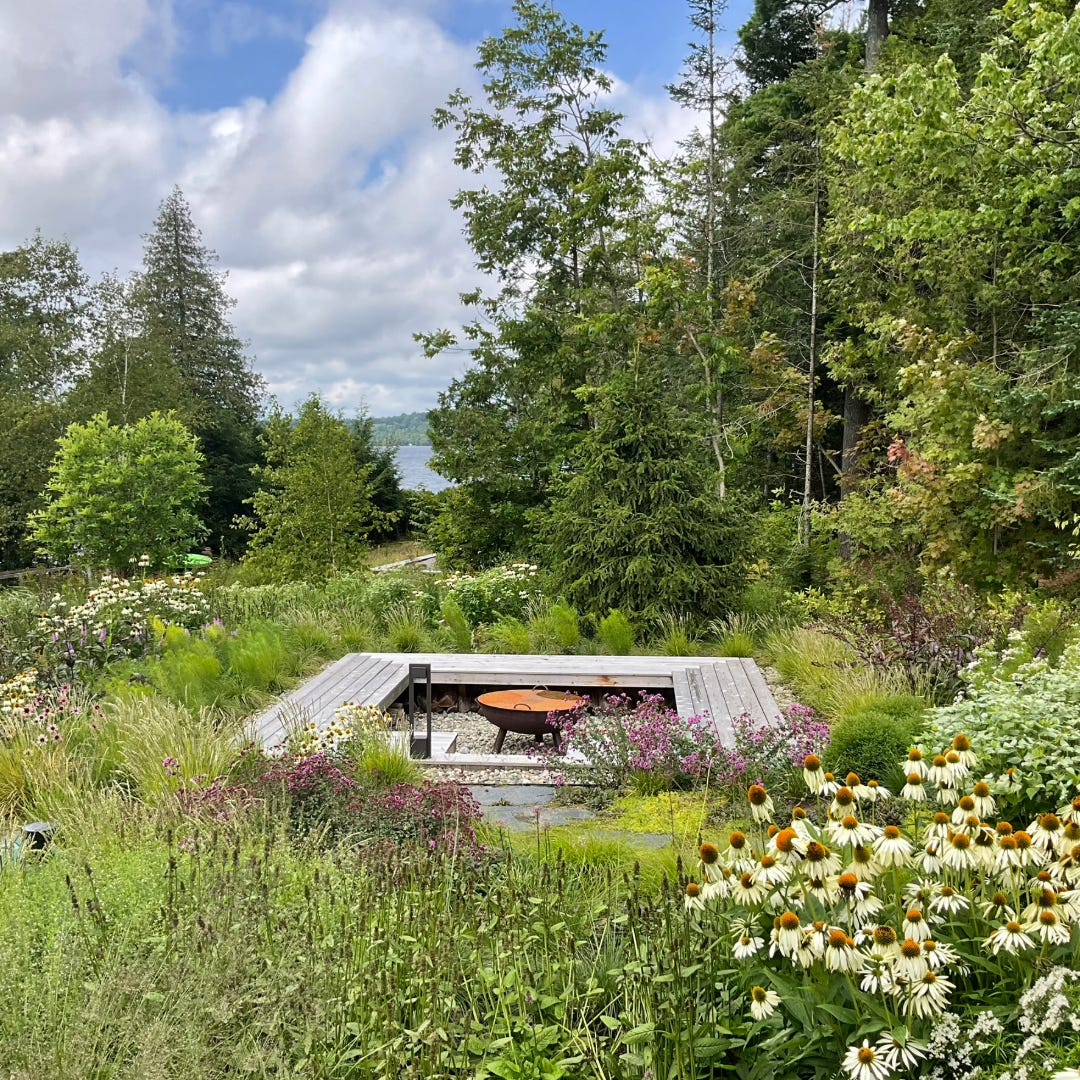
These tips are so good and I wish we'd seen things like this a few years ago. We purchased a teak outdoor dining set from Jordan's Furniture for over $3k and when I tell you I've regretted it from almost the moment we bought them. It turns out, there was a reason this "outdoor" dining set was on display inside. If you're not in an enclosed porch (we have a covered porch but not enclosed) you will spend countless hours cleaning and oiling this furniture every year. I have 3 young children and work full time..this was the most impractical purchase we've ever made!
LOVE this newsletter and the sentiment to DIY an answer. I wish I could add a photo in the comments, but I will share a shot of similar Wave Hill-inspired chairs at Maddoo that I think you will like